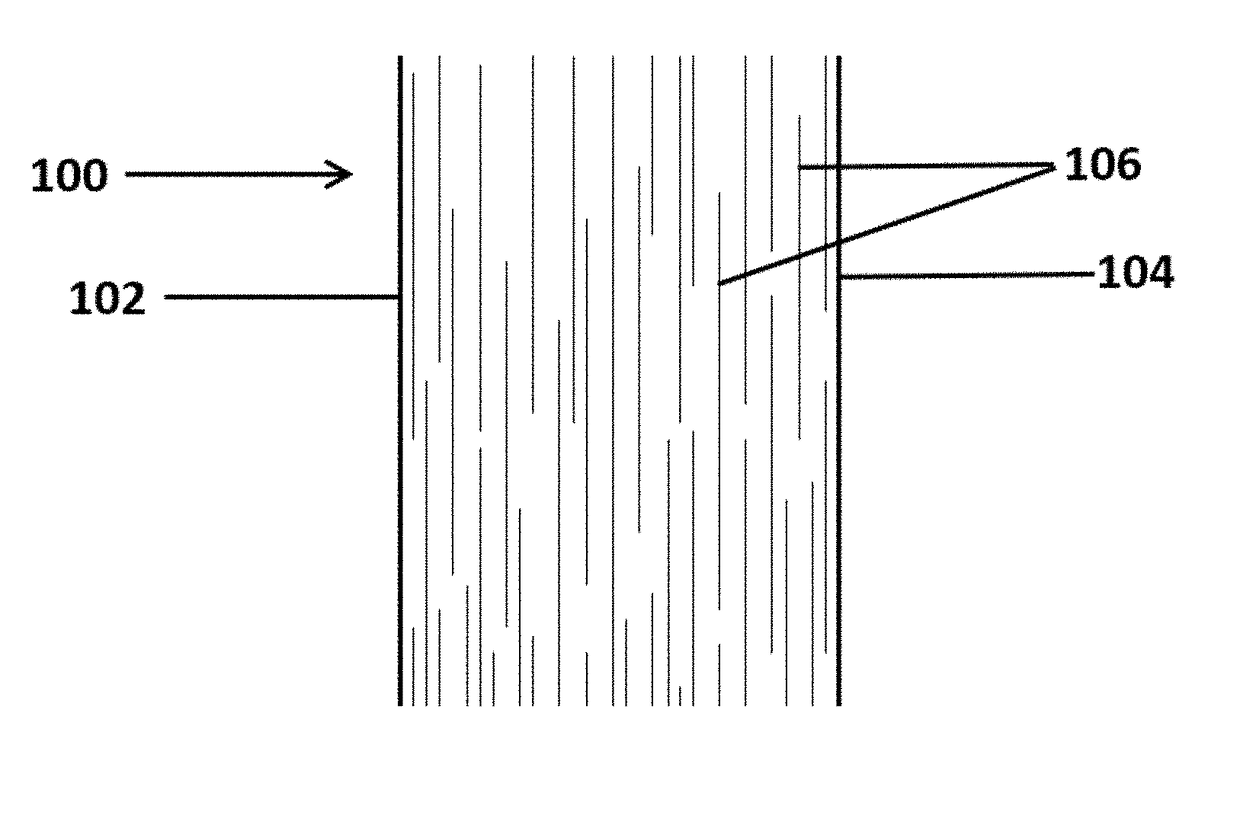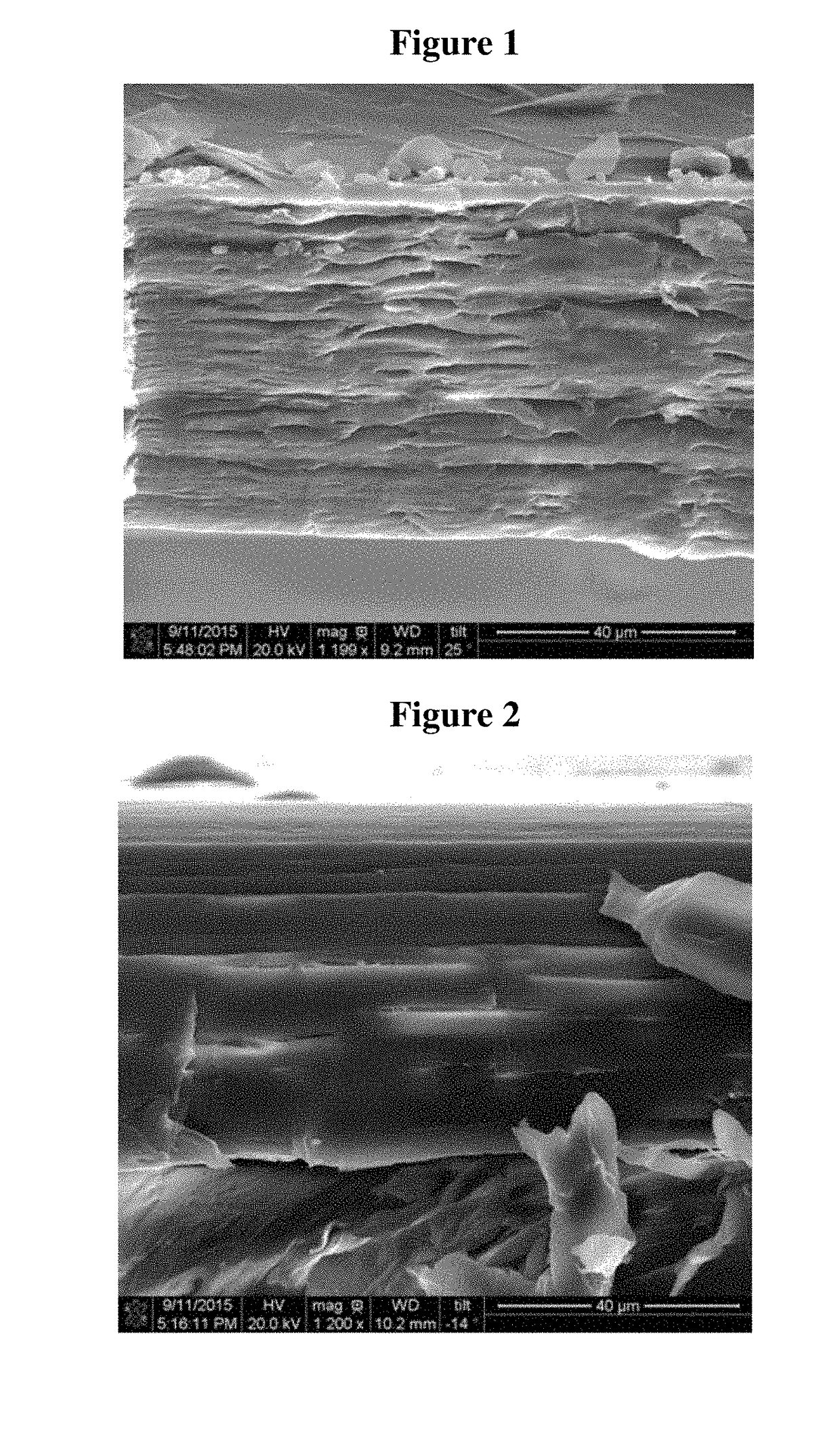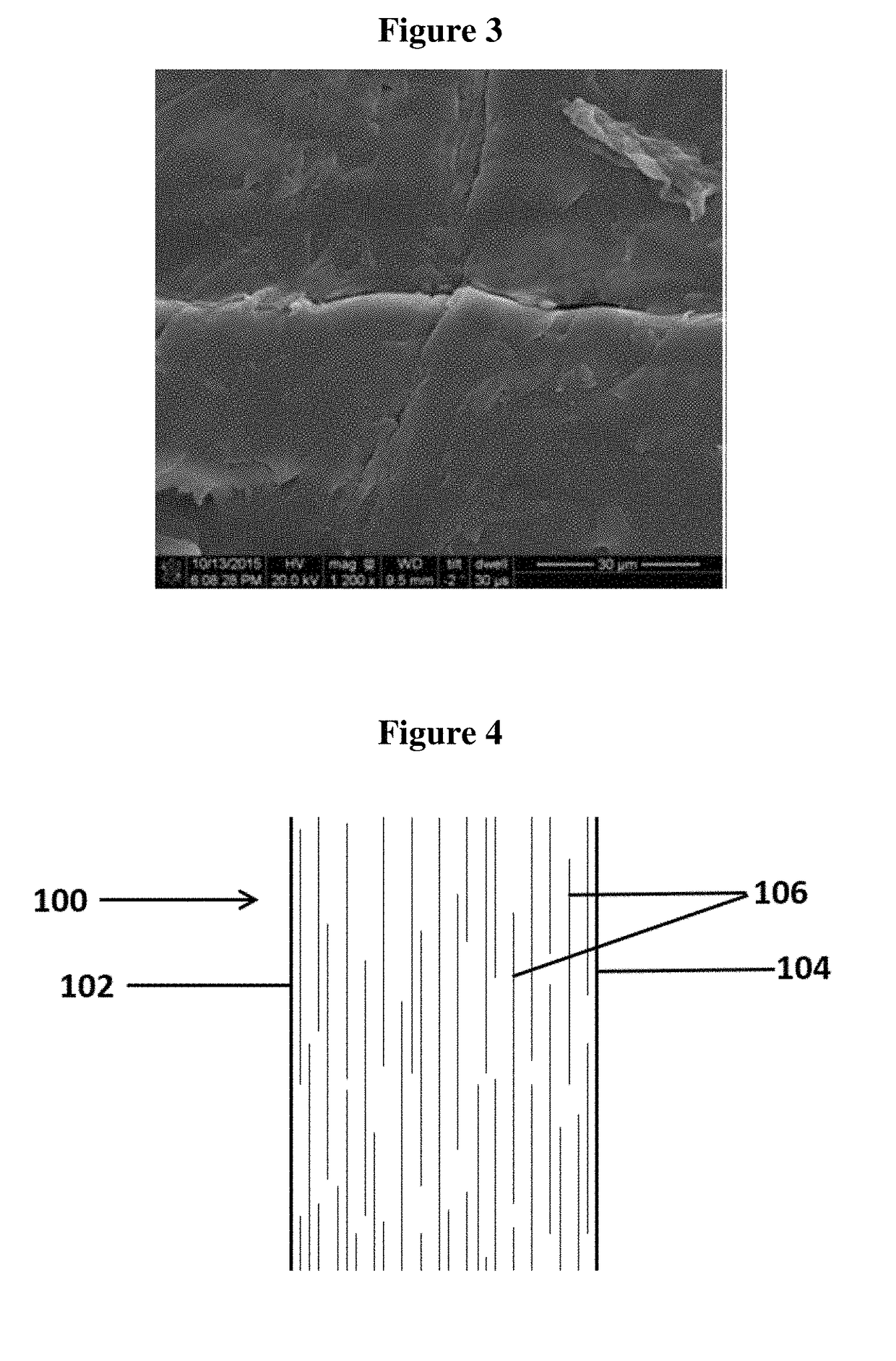Barrier additives
a technology of additives and barriers, applied in the field of barriers, can solve the problems of lateral dimensions (width and/or length), insufficient exfoliation of individual layers of compatibilized barrier additives in polymer matrix, etc., and achieve the effect of improving performan
- Summary
- Abstract
- Description
- Claims
- Application Information
AI Technical Summary
Benefits of technology
Problems solved by technology
Method used
Image
Examples
example 1
[0166]10.0 grams of MG70, 33 grams of T-6A (about 2.8 molecules of phosphate per 8 metal atoms), and 50 grams butanol were placed in a 250 ml round bottom flask fitted with a magnetic stir bar, a Dean-Starke trap and a reflux condenser. The mixture was heated to gentle reflux with stirring for 8 hours and water of reaction was azeotropically distilled off. After water removal was complete, 51.1 grams of ATBC was added and the butanol was distilled off under partial vacuum. The resulting product was 88 grams of a viscous, opaque oil with a nominal hydrotalcite loading of 10.6%. The oil was then subjected to high-speed shearing for two minutes in a blender before bottling.
example 2
[0167]10.0 grams of MG70, 40.0 grams of T-10A (about 2.9 molecules of phosphate per 8 metal atoms), and 50 grams butanol were placed in a 250 ml round bottom flask fitted with a magnetic stir bar, a Dean-Starke trap, and a reflux condenser. The mixture was heated to gentle reflux with stirring for 8 hours and water of reaction was distilled off. 60.0 grams of ATBC was then added and butanol was distilled off under partial vacuum. The resulting product was 104 grams of an oil with a nominal hydrotalcite loading of 9.1%. The oil was then subjected to high-speed shearing for two minutes in a blender before bottling.
example 3
[0168]10.0 grams of MG70, 65.0 grams of T-16A (about 3.4 molecules of phosphate per 8 metal atoms), and 40 grams butanol were placed in a 250 ml round bottom flask fitted a magnetic stir bar, a Dean-Starke trap, and a reflux condenser. The mixture was heated to gentle reflux with stirring for 8 hours and water of reaction was azeotropically distilled off. After water removal was complete, 80 grams of ATBC was added and the butanol was distilled off under partial vacuum. The resulting product was 150 grams of a viscous, translucent oil with a nominal hydrotalcite loading of 6.45%. The oil was then subjected to high-speed shearing for two minutes in a blender before bottling.
PUM
| Property | Measurement | Unit |
|---|---|---|
| Percent by mass | aaaaa | aaaaa |
| Pressure | aaaaa | aaaaa |
| Percent by mass | aaaaa | aaaaa |
Abstract
Description
Claims
Application Information
 Login to View More
Login to View More - R&D
- Intellectual Property
- Life Sciences
- Materials
- Tech Scout
- Unparalleled Data Quality
- Higher Quality Content
- 60% Fewer Hallucinations
Browse by: Latest US Patents, China's latest patents, Technical Efficacy Thesaurus, Application Domain, Technology Topic, Popular Technical Reports.
© 2025 PatSnap. All rights reserved.Legal|Privacy policy|Modern Slavery Act Transparency Statement|Sitemap|About US| Contact US: help@patsnap.com



